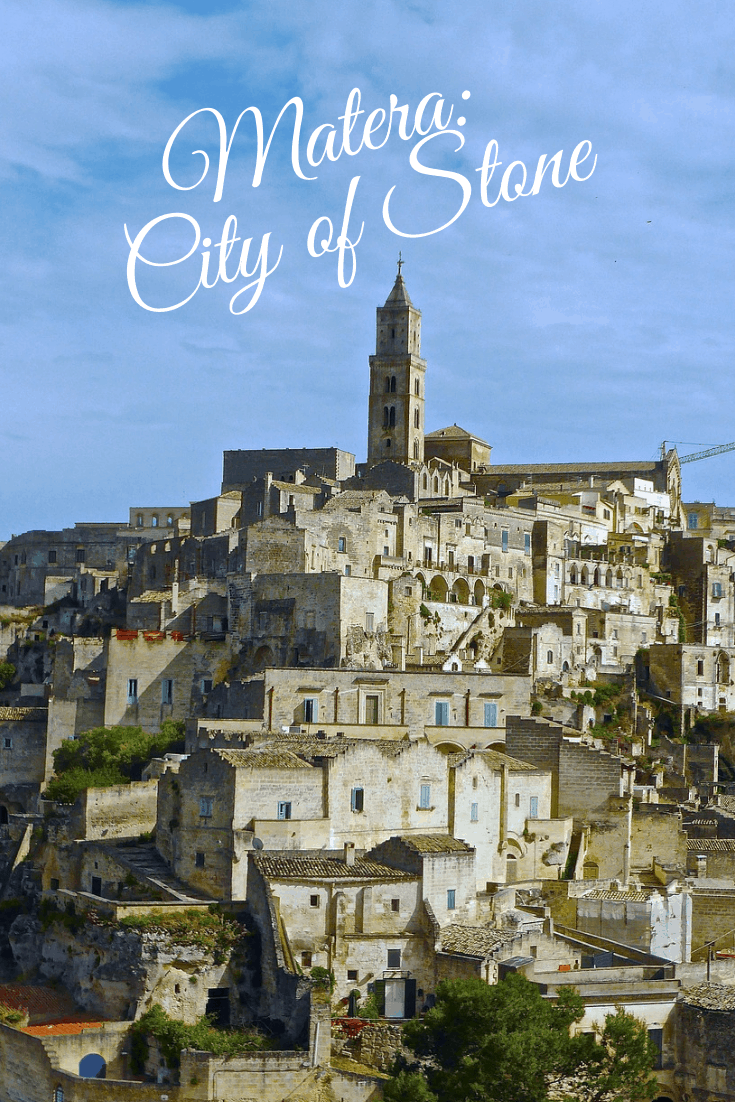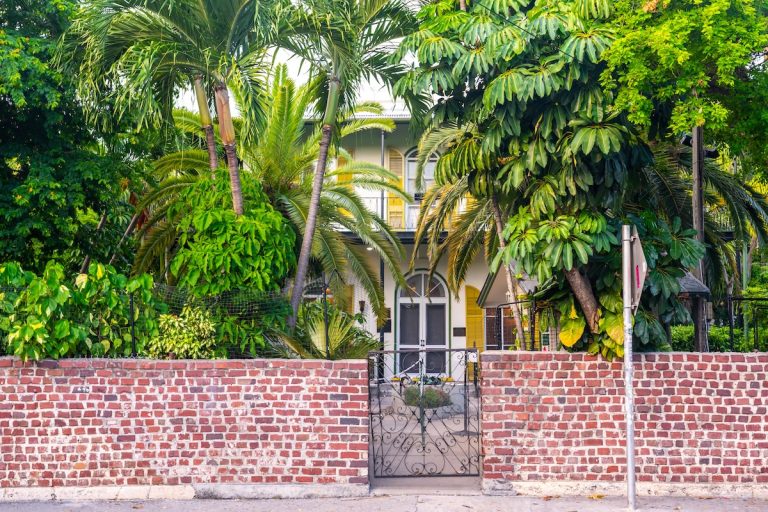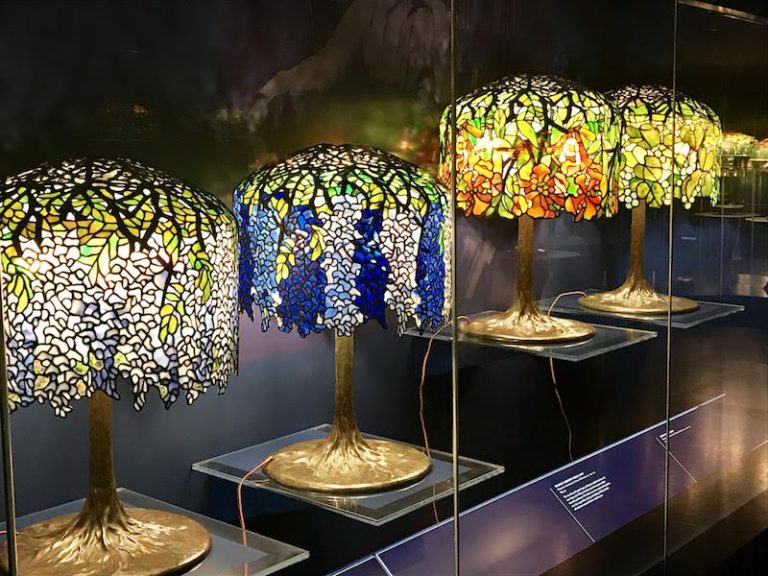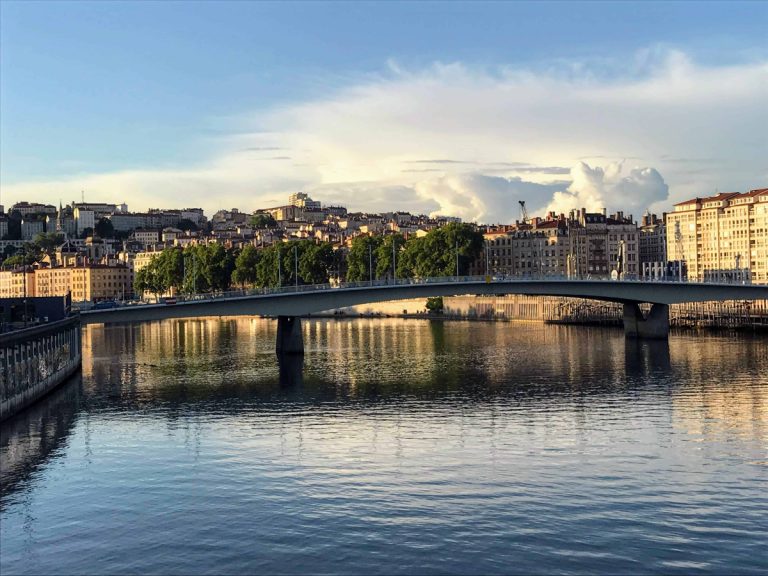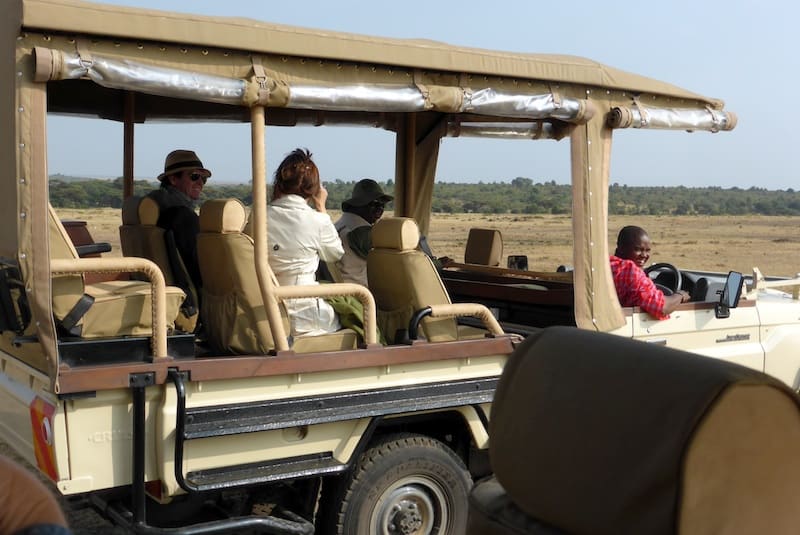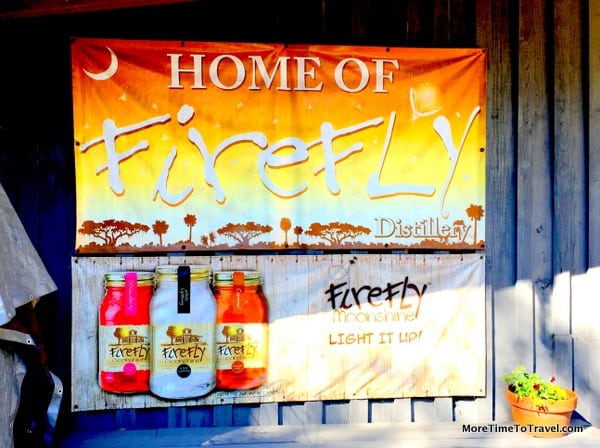Matera: A Spectacular City of Stone
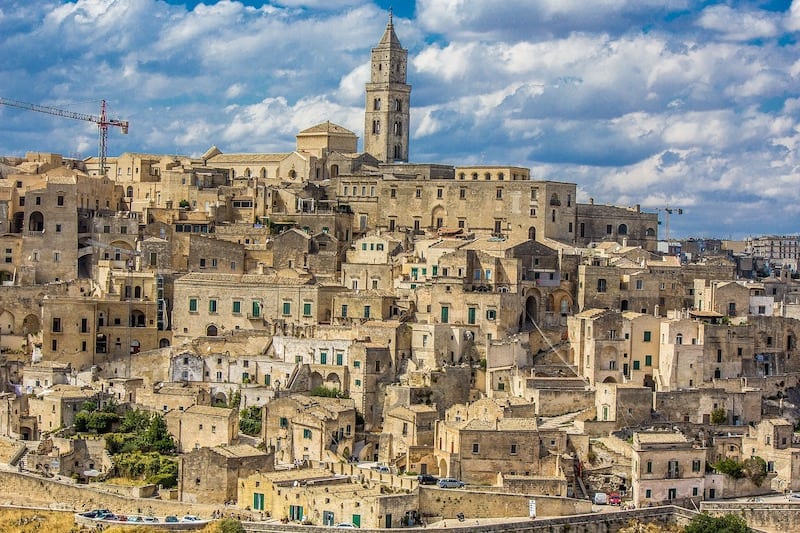
Guest contributor *Sharon Kurtz fell in love with Matera. It’s easy to see why she was dazzled by this city of stone.
Nestled in the instep of Italy’s famous boot—between Basilicata and Puglia in Southern Italy—the ancient city of Matera has quite literally been dug out of a rock. When you first encounter the panoramic views of the Sassi from one of the stone terraces overlooking the deep ravine (“la gravina”) of Matera, you’ll feel like you’ve traveled back in time.
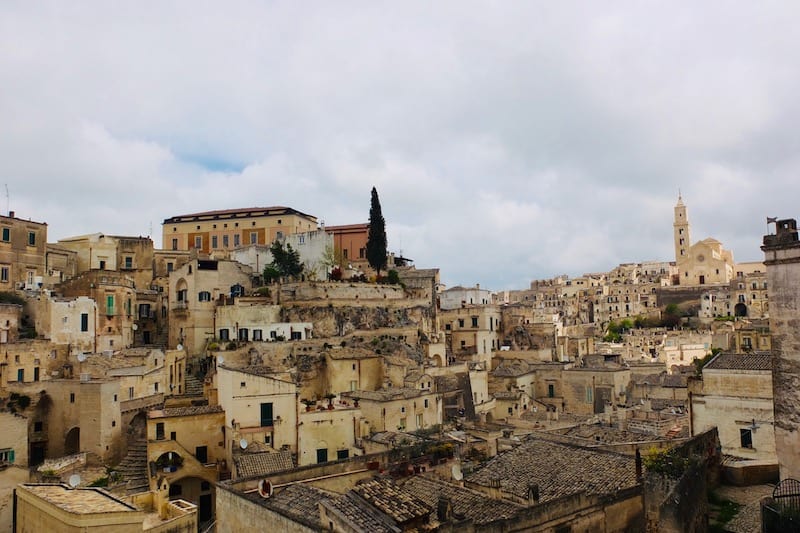
Called “one of the most unique landscapes in Europe,” Matera is undoubtedly one of the most spectacular places I’ve visited in Italy or anywhere in the world. My first glimpse of the Sassi di Matera stopped me in my tracks: Gazing across the expansive tangle of stone houses, windows, roofs and Cathedral dome across the rugged ravine took my breath away.
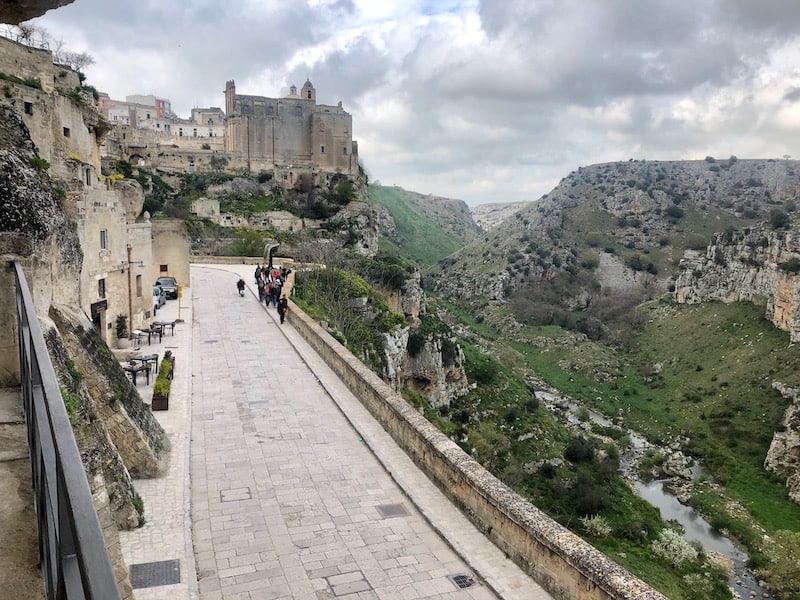
What are the Sassi?
The Sassi (stones) are a complex network of cave dwellings, passages, arches, and stairways revealing stunning ancient churches and cave houses that have been inhabited since Paleolithic times.
Teetering on the edge of a rocky ravine, Matera is divided into two valleys, Sasso Cavoso and Sasso Barisano. A patchwork of alleys and tunnels connect houses, churches, and ravines, offering endless views.
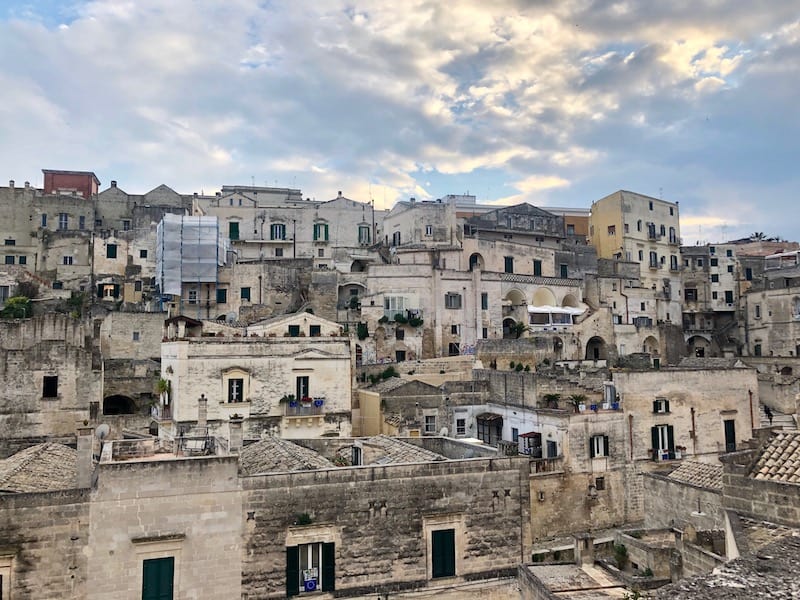
Rocky ledges are jammed with cave houses, each piled on top of the other.
Step into the narrow lanes between houses, and you are actually standing on the roof of the house below. The best way to explore the two neighborhoods is on foot, roaming through the narrow alleyways, up and down uneven stone staircases, discovering dead ends and tiny courtyards adorned with flower pots, cave churches and expansive views of the Sassi.
A brief history of Matera
Visiting the ancient city of Matera is not only breathtaking but also fascinating. Its history goes back more than 30,000 years, being one of the oldest continuously inhabited settlements in the world. Only Aleppo and Jericho have been inhabited longer.
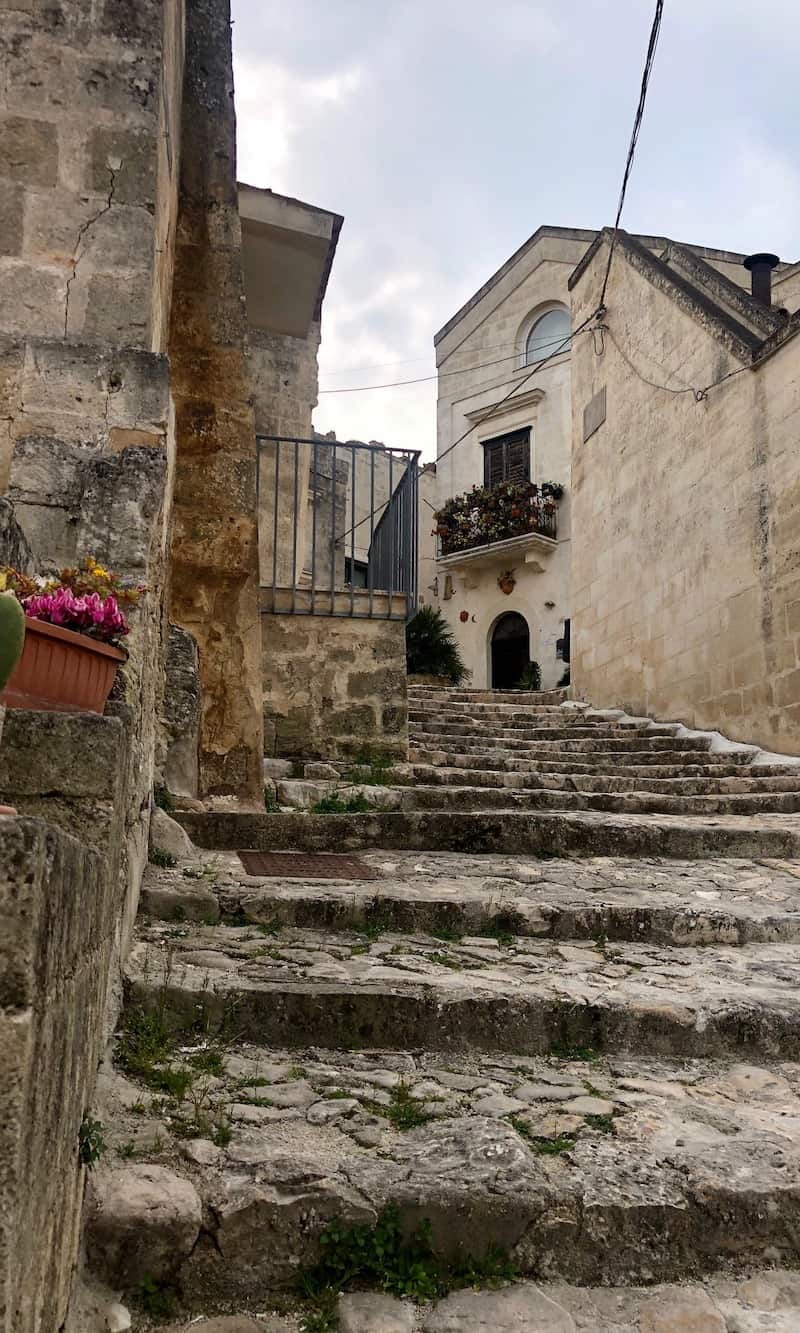
The original inhabitants and their ancestors never left. Instead, they quite literally “dug in.” From the oldest period in human history to eventually digging caves with metal tools created during the Iron and Bronze Ages, the people and their dwellings remained throughout the later waves of rulers and empires. Descendants of past generations still remain, even though some things are a little different now.
Life wasn’t easy in Matera
Matera came into national prominence in the 1950s. By then it was a forgotten city that had sunk into poverty. Whole families were living in the Sassi cave houses with no electricity or running water, sharing space with their livestock. Diseases were rampant and a constant threat. Conditions became so bad that in 1952, the Italian government evacuated most of the city and the inhabitants were moved to housing in a newly constructed part of the town, leaving the Sassi cave houses empty for decades.
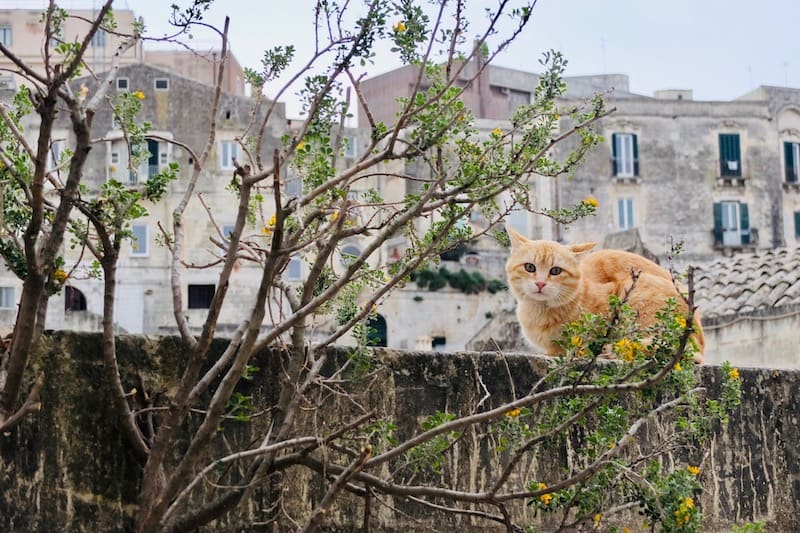
Matera: UNESCO World Heritage Site & 2019 European Capital of Culture
Before being selected as a World Heritage Site by UNESCO in 1993, Matera had long been one of the poorest cities in Italy known as the Citta dei Sassi, literally the City of Stones. The prestigious UNESCO label gave a new image to the city that was once an example of degradation and national shame.
More recently, Matera was designated one of two 2019 European Capitals of Culture, the other being Plovdiv, Bulgaria. This milestone now marks another important chapter in the city’s history. The theme “Matera 2019 Open Future” is the slogan associated with the designation Various artistic and cultural events scheduled throughout the year, including exhibitions and public works of art across the city.
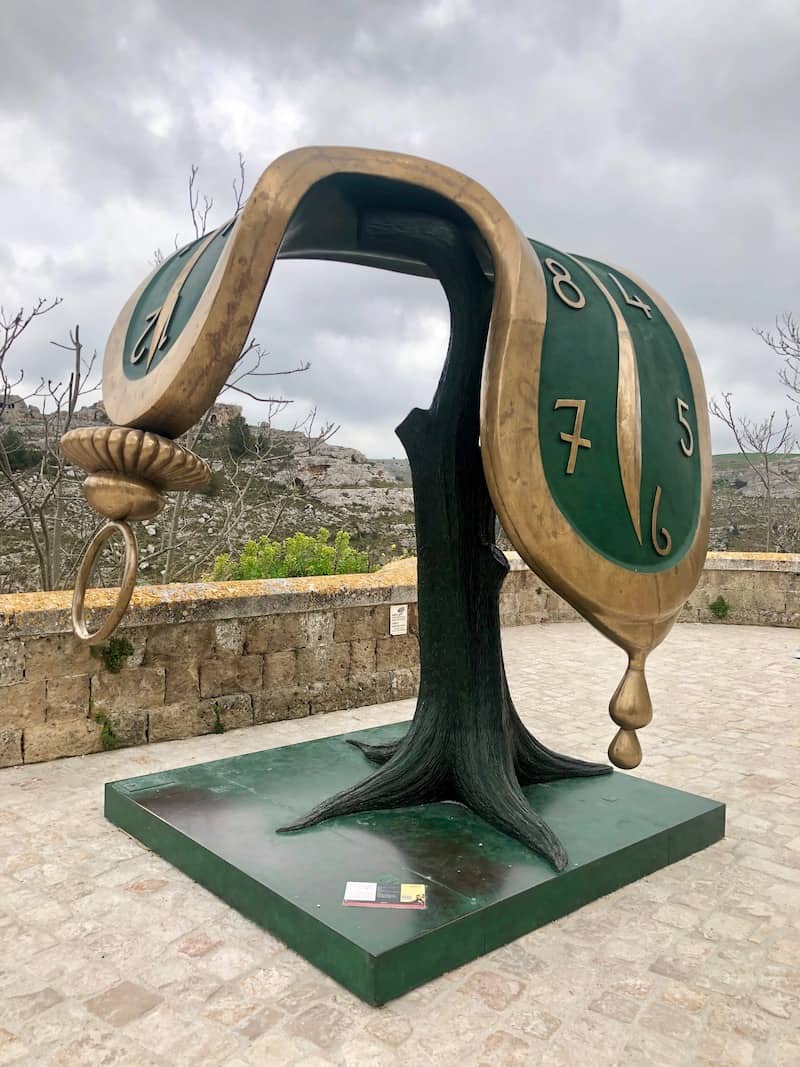
What to do in Matera
Matera is a place to wander and get lost. Go for a walk without a map, with a sense of adventure and you’ll experience a surprise at every turn no matter which direction you walk. You are bound to come across the major attractions without necessarily looking for them.
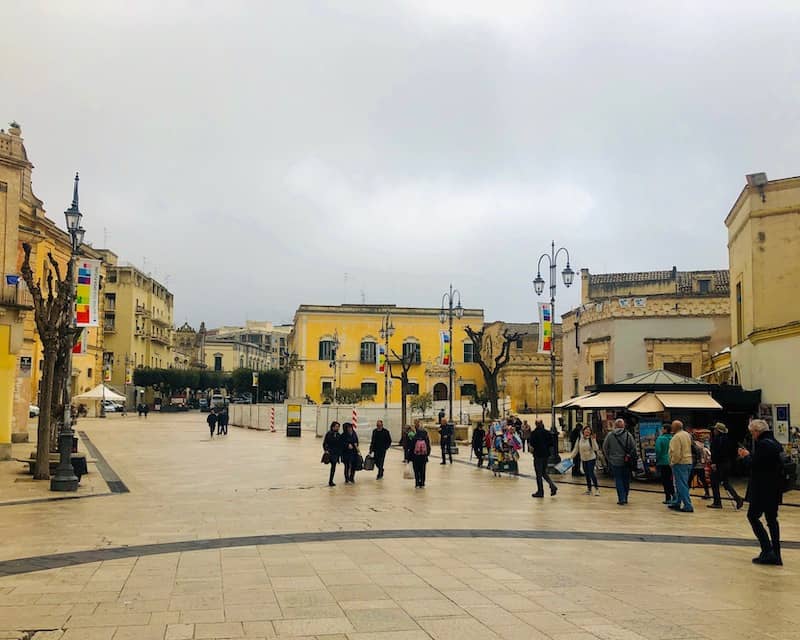
Historic Center
Piazza Vittorio Veneto is a lively square with several churches, cafes and Roman remains. Via del Corso, the main shopping street, links the square with Piazza San Francesco and Piazza Sedile. In the early evening, join the ritual passeggiata (a leisurely stroll): Amble through the streets, or enjoy an apertivo or glass of wine at an outdoor café and watch the world go by.
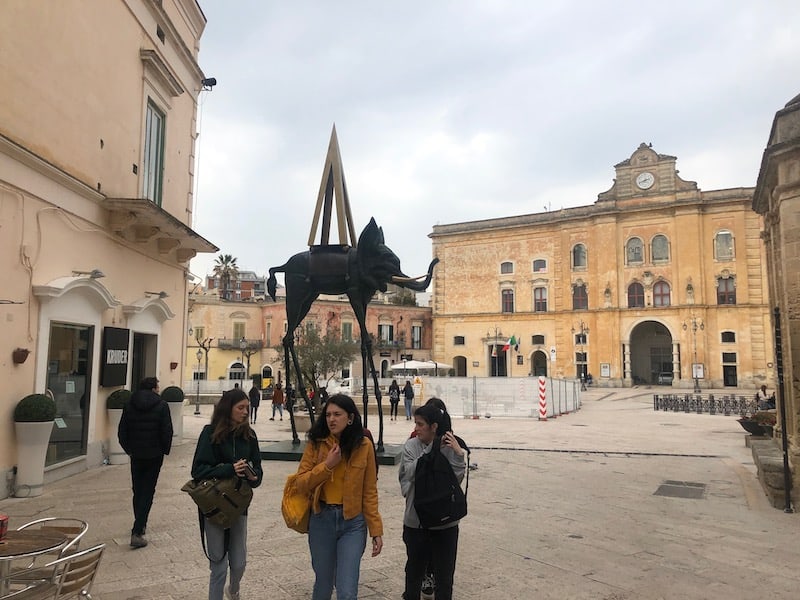
Ancient churches
There are over 155 churches hewn from the rocks in and around Matera, more than you can view in a single visit. The Rupestrian churches are carved into the stone and covered in beautiful frescoes.
Dating back to the Middle Ages, there are stunning frescos inside that date back to the early-Medieval period before recorded history began. Some churches charge admission while others are free of charge – but they are all impressive.
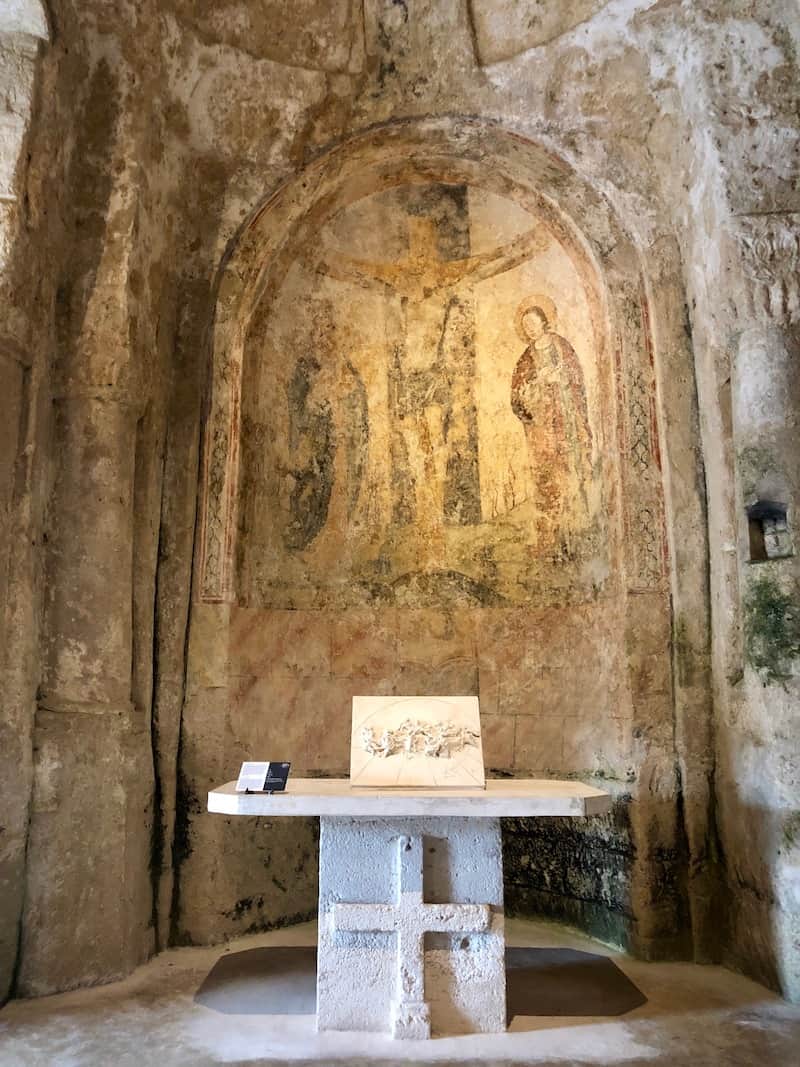
Some of my favorites include:
- Chiesa di Santa Maris di Idris and San Giiovanni
- Convento di Sant’Agostino
- Chiesa Rupestri de Santa Lucia alle Malve
Casa Grotta Di Vico Solitario
This recreated cave dwelling gives visitors a first-hand look at how a family in Matera lived in the 18th century, complete with a cistern to collect rainwater. The entire family (on average six members) including animals lived together in the cave.
Salvatore Dali Exhibition

The dramatic setting – two cave churches sculpted from the rock on the edge of a ravine and giant sculptures scattered throughout Matera – bring the Dali Worlds of Art into sharp relief in this exhibition that is a part of the European Capital of Culture celebrations. More than 200 works by the Catalan surrealist master will remain in place through November of 2019. It is worth the price of admission just to see the artworks displayed in the 11th-century cave church Madonna dell virtu e San Nicola dei Greci.
Matera is a famous setting for films
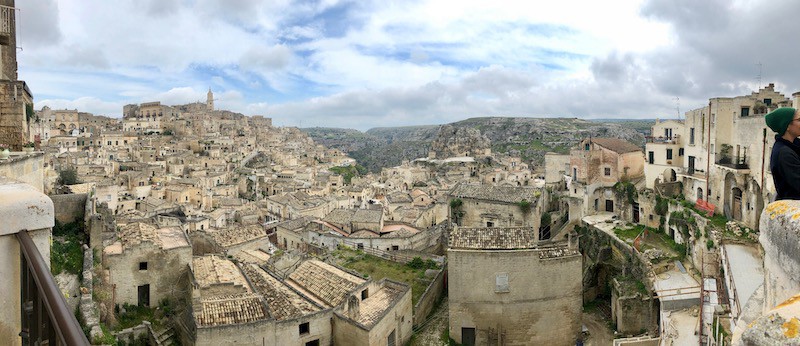
Matera gives you a glimpse of the distant past, as the city hasn’t changed much since Roman times. Bearing a considerable resemblance to ancient Jerusalem, Matera is a magnet for filmmakers and artists seeking a biblical landscape.
- Richard Gere used Matera as a setting for “King David” in 1985.
- Mel Gibson filmed “Passion of the Christ” in Matera in 2004.
- Parts of MGM’s “Ben Hur” and Warner Bros. ‘Wonder Woman” were filmed here in 2016.
- When I was in Matera this past April, the city was abuzz because actor Daniel Craig (aka “007”) was in town to prepare to film the prologue action sequence for “Bond 25” with a release date of April 2020.
Where to eat
I find that it is best to eat foods from whatever region of Italy you are visiting. In Matera, you find plenty of local ristorantes and cafes serving classic Puglian and Basilicata cuisine, using lots of fresh seasonal vegetables. From pastries to pasta, and cheeses to deli meats, eat as many local dishes as possible. Find a restaurant or café that catches your eye and go for it.
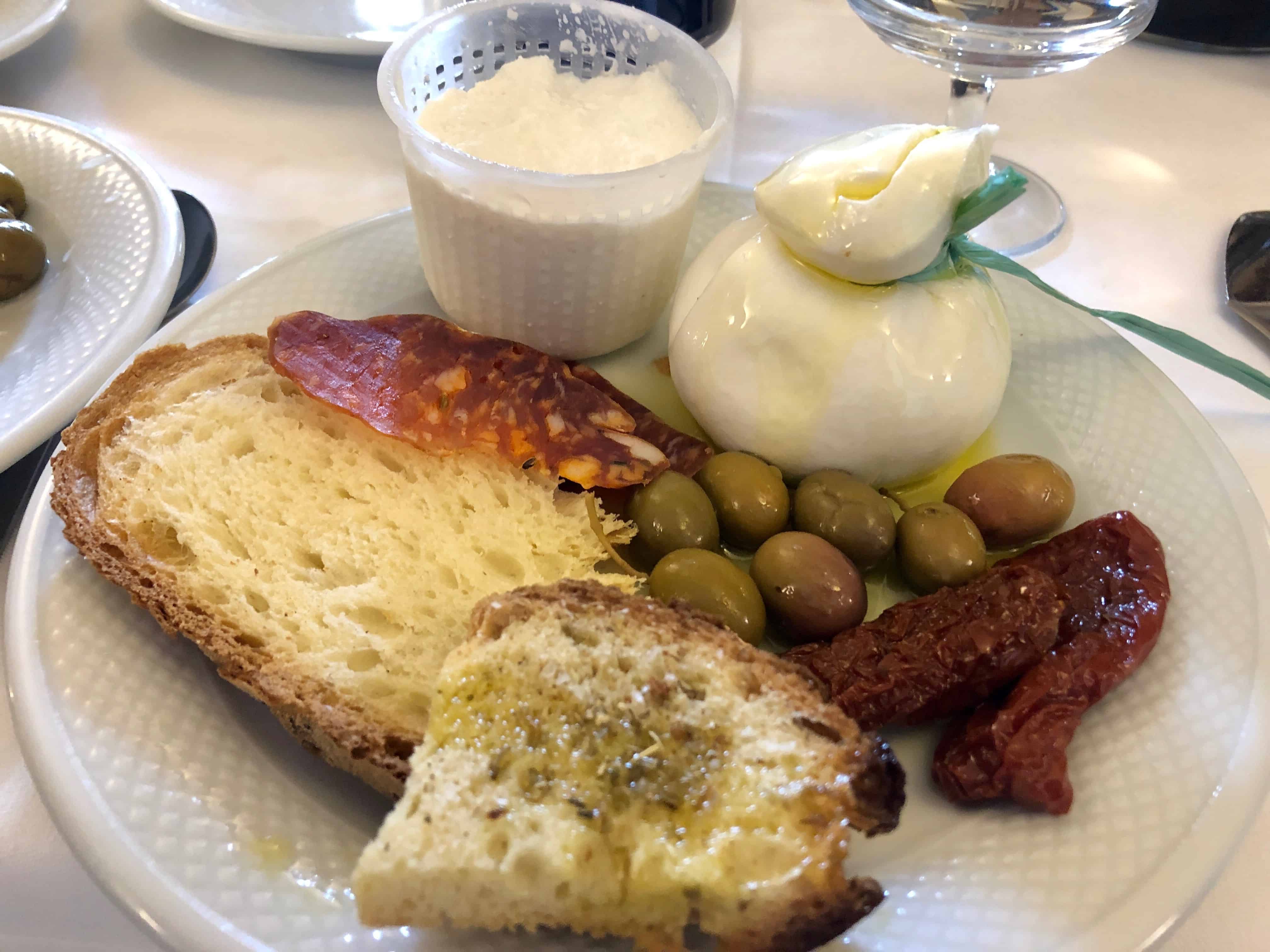
I loved the dining experience at Il Terrazzino Ristorante. Located in Sassi de Matera with ambiance to spare, it has a cave interior with vaulted stone ceilings and an outdoor terrace overlooking the historic Sassi. Antipasti, fresh cheeses, local pasta, seafood and more, the owners serve typical regional dishes whose recipes have been handed down from their grandparents.
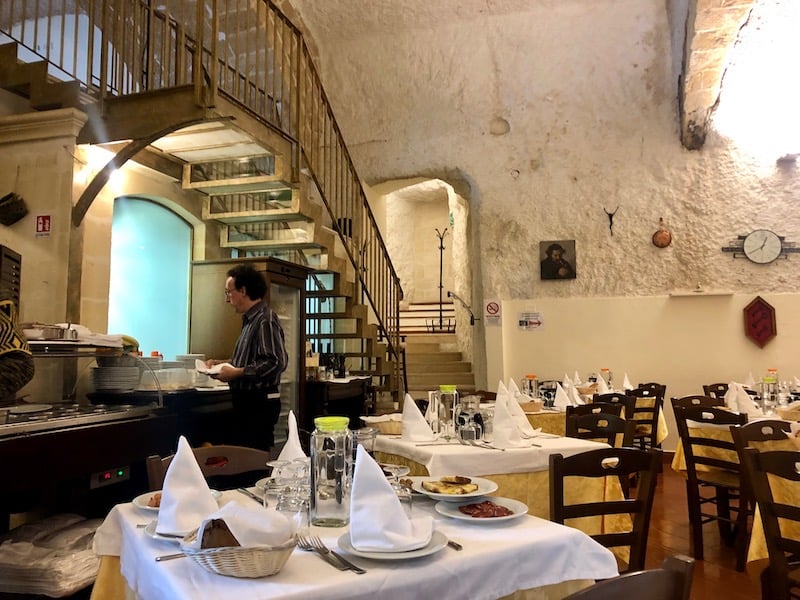
The local wine specialty, Primitivo, is served in a large carafe (and at a super reasonable price). Service is friendly and the ristorante features a wine cave and underground small museum…. What’s not to love? It’s located on Vico San Giuseppe, not far from the Piazza Duomo.
Where to stay
As for lodging, I recommend staying in one of the cave districts of Sassi as a great way to soak in this place. It would be a shame to visit Matera without this overnight experience. By searching online, you can find a variety of bed and breakfasts, small hotels and Airbnb choices.
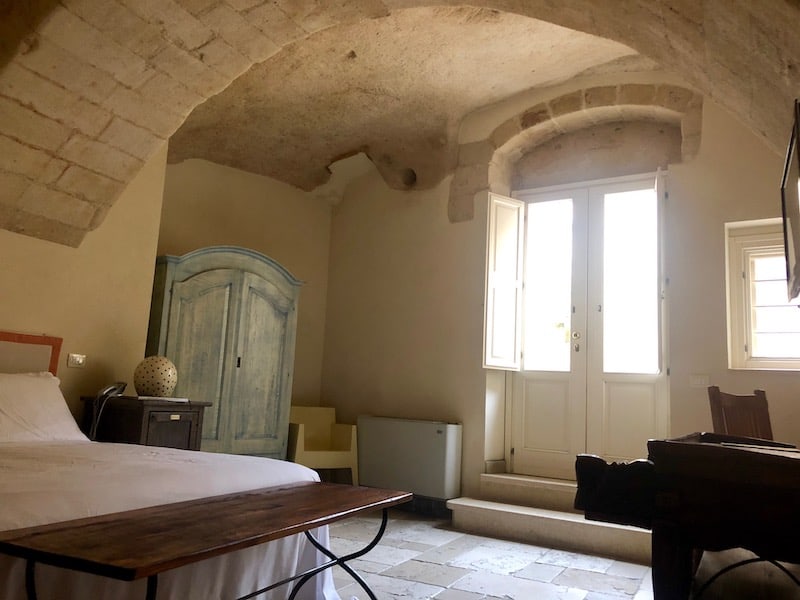
I stayed at Locanda di San Martino, a small hotel in the Sasso Barisano district comprised of many individual caves connected by external flights of stairs with an elevator in the rock. The reception area of this multi-level hotel is ground level, at the valley bottom.
The property’s 40 bedrooms with private baths are all independent caves, set along little terraced paths and off external staircases. Chairs and benches dot the terraced pathways between bedrooms so guests can sit outside and enjoy splendid views over the valley.
The hotel’s public areas are all in stone caves, with a large breakfast room, seating areas and small lounge/bar. Cave hotels can be tight on space – after all, one’s working around the earth’s natural geography. The reception staff was very friendly and helpful. They stocked maps and information leaflets and recommended an initial sightseeing walk.
When I return to Matera, I would be very happy to stay here again.
Final thoughts on visiting Matera
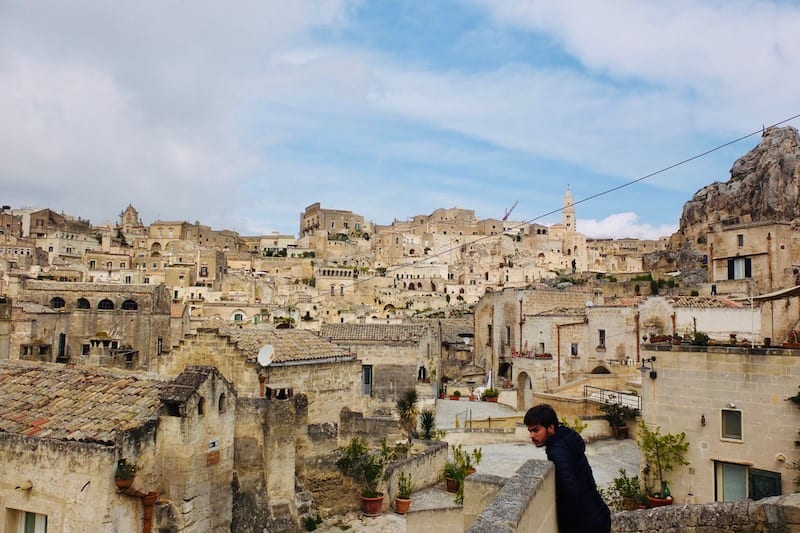
Matera is an amazing, special, unforgettable place with an undiscovered air about it. Off the normal tourist track with its spectacular setting and fascinating history, plan a visit soon before the rest of the world finds out about it. The magical, otherworldly glow of Matera at night created by the glimmering lights from each side of the Sassi over the deep ravine is a sight I will not soon forget.
IF YOU GO
- Matera is a little out of the way so it can be difficult to reach. The closest airport is Bari International Airport (about 43 miles away).
- I took the Trenitalia train from Rome to Bari and then hired a private car service to Matera, about 90 minutes from Bari.
- It could make sense to rent a car from Bari if you are planning to combine your trip with a visit to the neighboring region of Puglia. Alternatively, you can also take a direct train from Bari to Matera. However, the train is a local commuter train that doesn’t run on Sundays or holidays.
*About the author: Sharon Kurtz is a freelance travel writer based in Dallas, Texas. Her passion is traveling the world and discovering local customs and culture. She is eager to continue to find interesting off-the-beaten-tourist-track spots both at home and abroad. Follow her travels on Instagram@Shar_kurtz and Facebook at Sharonkkurtz.
All photo credits except for lead photo: Sharon Kurtz.
Save to Pinterest!
